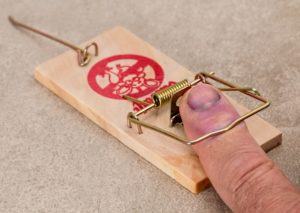The below post was written by Jonathan Bernstein on April 2, 2015. Since then, we have seen countless severe crises where the damage could have been prevented, or at least reduced significantly. Some of them are still in the headlines today. It’s not just about saving reputation and your bottom line, addressing the ugly possibilities before they happen can save human lives. So, we ask again…
Some of them are still in the headlines today. It’s not just about saving reputation and your bottom line, addressing the ugly possibilities before they happen can save human lives. So, we ask again…
How Much Pain Does It Take?
By Jonathan Bernstein
What do September 11, Enron and the news about sexual molestation by Catholic priests have in common?
They were all what I’ve previously termed “creeping crises,” vulnerabilities, bombs (literally and figuratively) waiting to explode. There were people — the American intelligence community, some employees of Enron and Church leaders, respectively — who had information that could have prevented or reduced the damage from these situations. And who perpetuated and exacerbated the crises by acts of commission or omission.
They were all terrorism if you define it as “parties inflicting suffering on innocent victims as a means to an end.”
They are all the tip of massive icebergs of creeping crises. Who dares to say that there aren’t other terrorism groups poised to wreak unprecedented damage, corporations whose fiscal and legal practices will lead to Enron-like ruin, and criminal sexual behavior by clergy of possibly every major world religion?
They are all crises which strike at our emotional infrastructure: our desires for physical, psychological and financial security.
Human beings have an immense capacity for enduring pain individually and as organizations. And an immense resistance to change. That’s a bad combination, because for most individuals, and most organizations, it seems to take a great deal of pain to motivate change.
There is a psychological concept called “hitting bottom” that refers to the point at which an individual feels so much pain from what he or she has been doing that the fear of continuing “as is” is greater than the fear of change. At that point, the individual is willing to take some direction from someone other than him- or herself.
It has been my experience that organizations, too, usually have to “hit bottom,” to feel enough crisis-related pain from their actions, or lack thereof, that they’re willing to realize that their own best thinking isn’t making them crisis-resistant, versus crisis-prone. And that’s when they start getting proactive about crisis management.
Here’s the catch, however. Sometimes, that willingness to change comes too late. Sometimes, for an individual or an organization, that delay is fatal.
So ask yourselves at your next board meeting: how much pain does it take?
Jonathan Bernstein
www.bernsteincrisismanagement.com
Connect with Jonathan on LinkedIn
